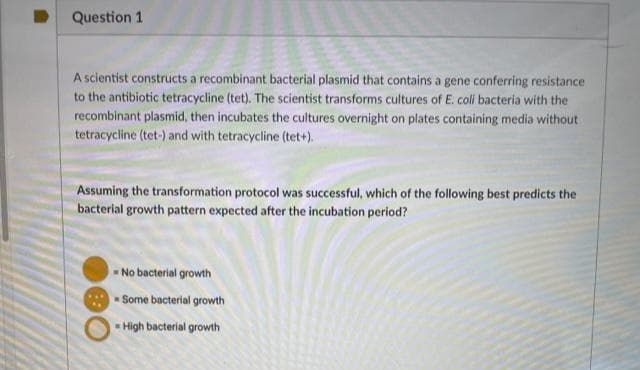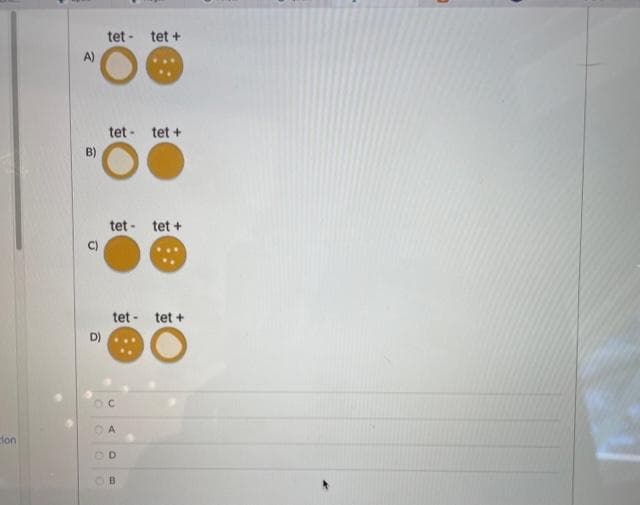Question 1 A scientist constructs a recombinant bacterial plasmid that contains a gene conferring resistance to the antibiotic tetracycline (tet). The scientist transforms cultures of E. col bacteria with the recombinant plasmid, then incubates the cultures overnight on plates containing media without tetracycline (tet-) and with tetracycline (tet+). Assuming the transformation protocol was successful, which of the following best predicts the bacterial growth pattern expected after the incubation period?
Gene Interactions
When the expression of a single trait is influenced by two or more different non-allelic genes, it is termed as genetic interaction. According to Mendel's law of inheritance, each gene functions in its own way and does not depend on the function of another gene, i.e., a single gene controls each of seven characteristics considered, but the complex contribution of many different genes determine many traits of an organism.
Gene Expression
Gene expression is a process by which the instructions present in deoxyribonucleic acid (DNA) are converted into useful molecules such as proteins, and functional messenger ribonucleic (mRNA) molecules in the case of non-protein-coding genes.
Choose correct option.


Trending now
This is a popular solution!
Step by step
Solved in 3 steps









